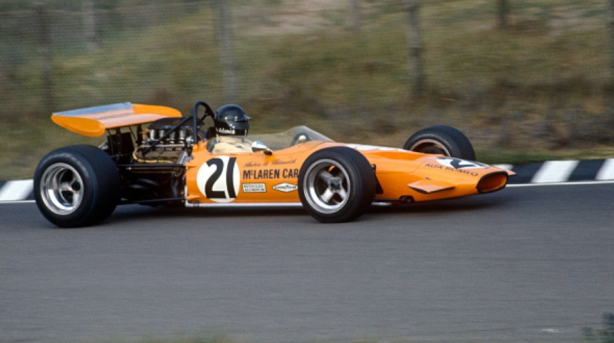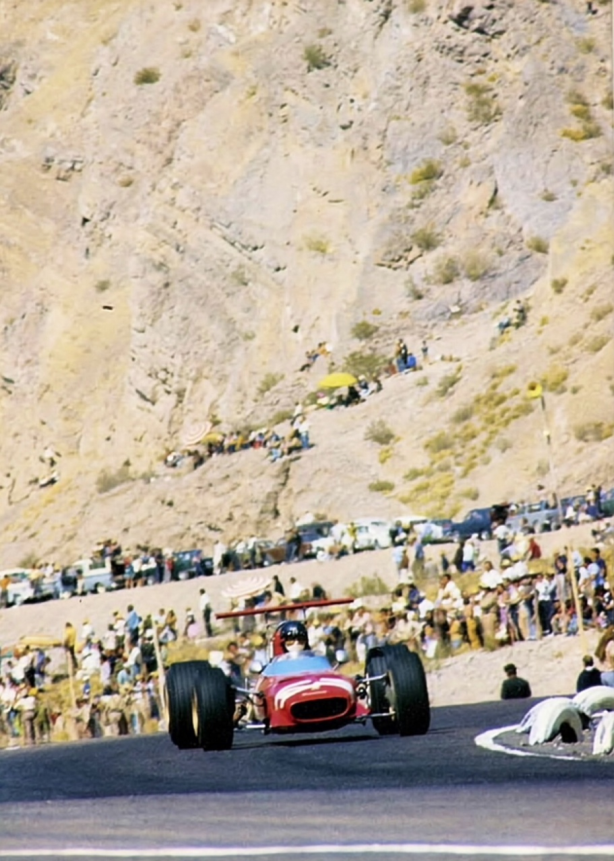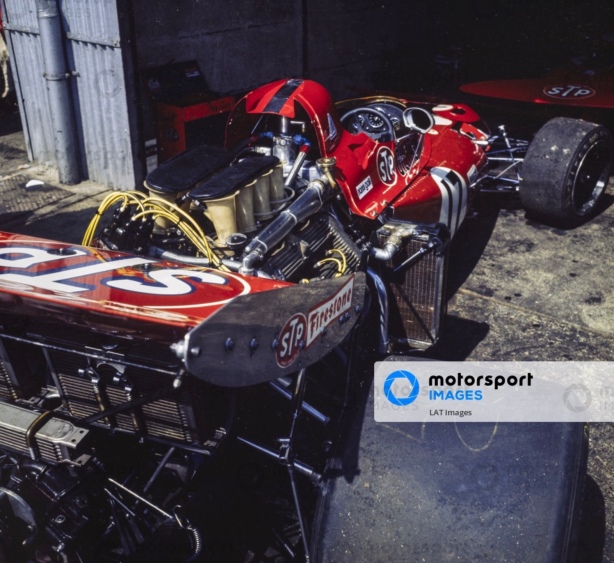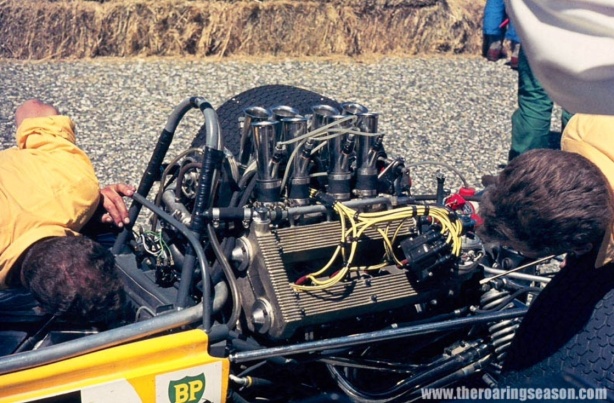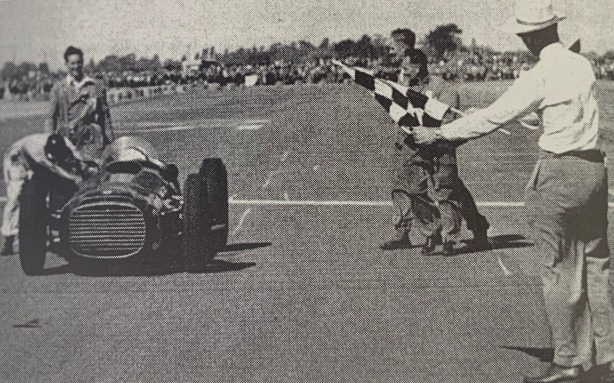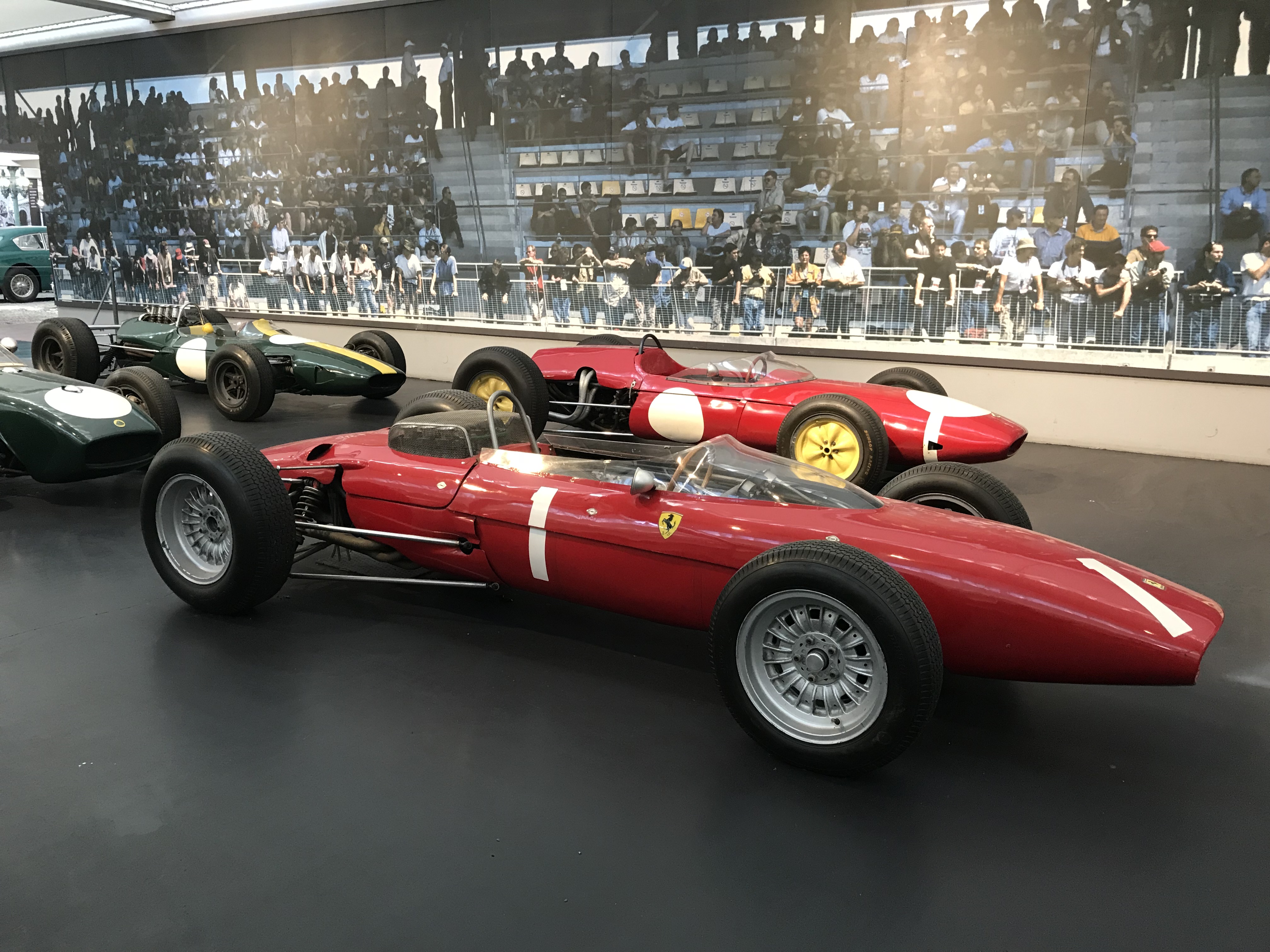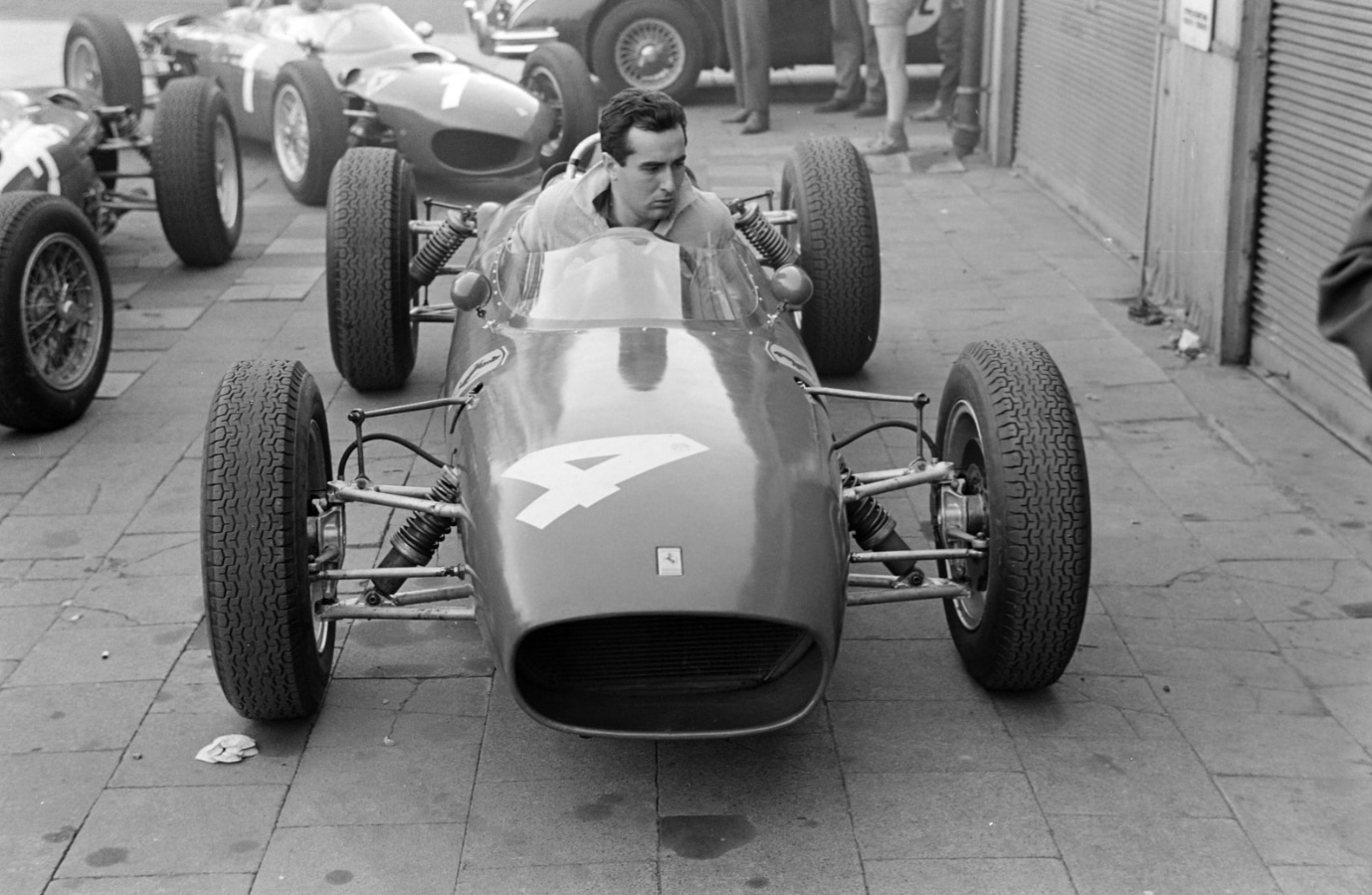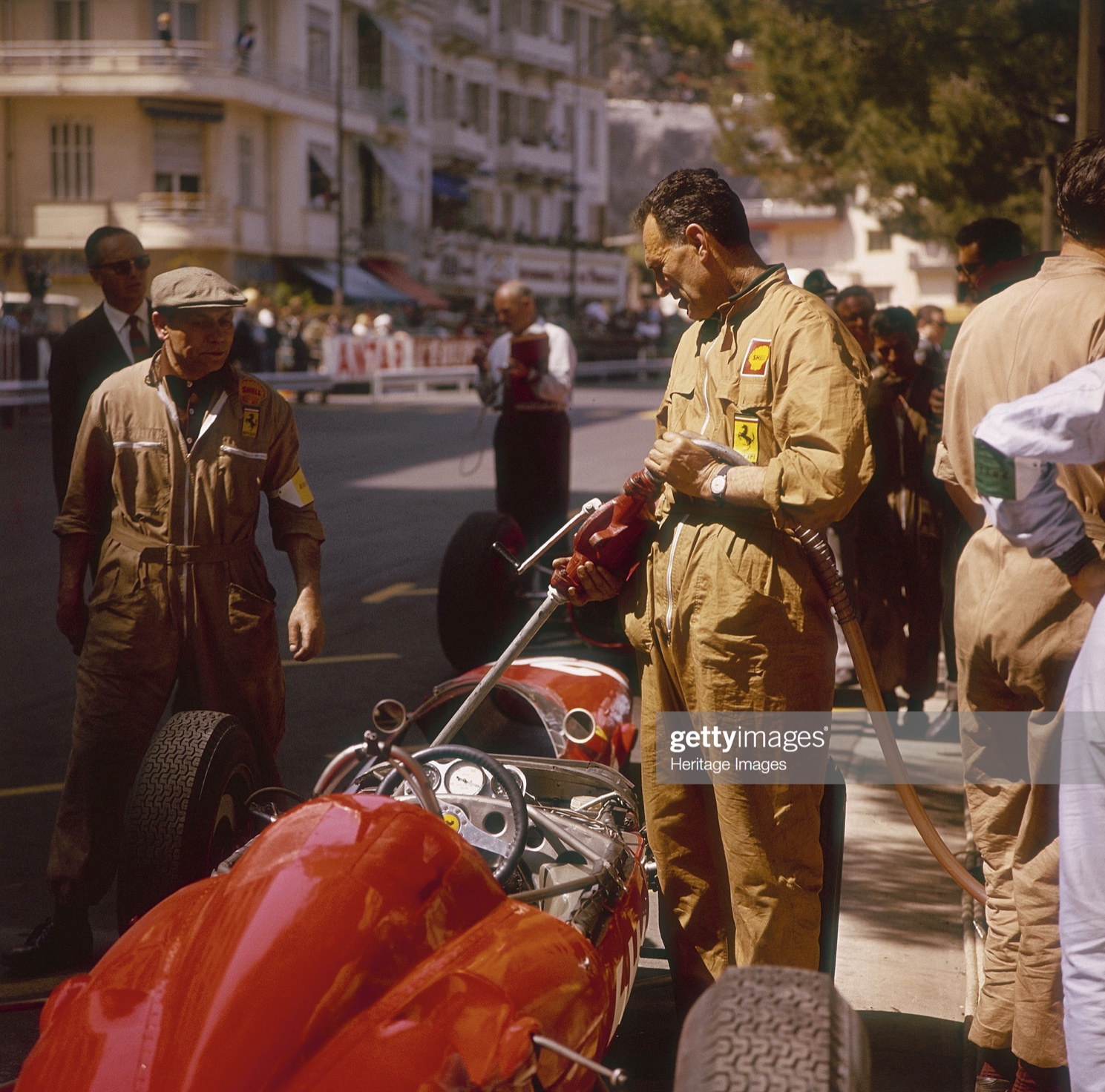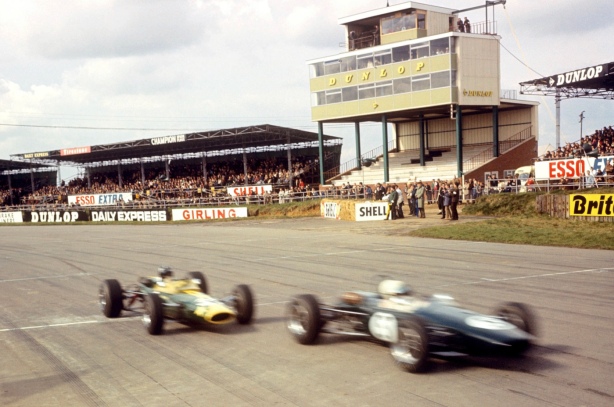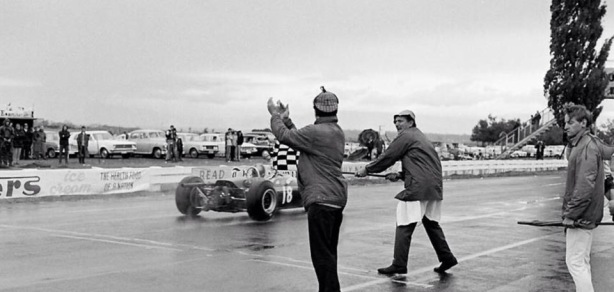
Brian Hatton’s beautiful cutaway rendering of the 1927 Grand Prix Fiat 806…
Fiat’s impact on Grand Prix racing in the twenties was hugely significant, then they departed almost as quickly as they arrived in 1924, reappeared in 1927 with this radical 806, won and then disappeared from GP racing forever inclusive of destroying this jewel of a car, it’s parts and drawings…
One of the greatest of grand marques FIAT (Fiat after 1906) – ‘Fabbrica Italiana di Automobili Torino’ was founded on 11 July 1899, the marque first appears on the race winners lists in 1900 with Felice Nazzaro’s win in the 28 April Torino-Asti race the beginning of many aboard a Fiat 6HP. Vincenzo Lancia won again later that year in the Padua-Vicenza-Bassano-Treviso-Padua event on a simllar car. Other winning marques that year included Panhard, Riker Electric, Peugeot, Benz, Daimler, Mors and Bolide.
Lets have a brief look at Fiat’s contribution in the Edwardian Age of automotive leviathans through to its defining GP cars of the early to mid twenties- the 801, 804 and 805, the circumstances of their sudden withdrawal from racing after the 1924 French GP and the equally surprising re-appearance on the grid at Monza in 1927 only to tease the enthusiasts of the day before ‘bolting out the Monza garage door’ for the very last time but for a few races in the US in 1925.
In 1901 Nazzaro won the Piombino-Grosseto event in the FIAT 12HP Corsa four-cylinder engine car owned by Conte Camillo Della Gherardesca setting a record of 1:49.54 despite the local tram service being maintained whilst the contest took place!

(GA Oliver)
Two races in 1904 fell to Lancia in the 75HP- the Susa-Montecenisio Hillclimb, and the Coppa Florio, by 1905 the FIAT four cylinder machine was of 16.2 litres in capacity.
The 1905 Fiat (above) whilst ‘built in admiration of the Mercedes’ wrote Cecil Clutton, incorporated a major engineering advance by placing both inlet and exhaust valves in a hemispherical cylinder head, the valves, inclined at 45 degrees were operated by pushrods. The 180 x 160mm bore/stroke engine developed 120bhp at no more than 1100rpm.
Fiat won three events in 1907, the second Grand Prix racing season- noting that the 1906 French GP is considered the first grand prix, when Felice Nazzaro won Targa (28/40HP) the Kaiserpreis (‘Taunus’ 8 litre) and the six and three quarters of an hour ACF French GP in the 135hp 16.2 litre car at an average speed of 70.5 miles per hour- very much making him ‘Driver of The Year’.
In 1908 Nazzaro won the Coppa Florio in Bologna and Louis Wagner the American Grand Prize at Savannah, Georgia. Aftrr the abstention of manufacturers from racing in 1909 and 1910, in 1911 Victor Hemery won the French Grand Prix at Le Mans and David Bruce Brown the American Grand Prize- Caleb Bragg won the American race again in 1913 aboard a 10 litre 120hp Fiat S74.

Aldo Weilschott, Fiat 2C starting, DNF accident, French GP 1906. Ferenc Scisz won in a Renault (unattributed)

1907 Fiat 130HP- Felice Nazzaro’s winning 1907 French GP machine (unattributed)

Vincenzo Lancia, Fiat 50HP, Targa Florio 1908- 2nd after unnecessarily pitting for tyres whilst in the lead, Vincenzo Trucco won in an Isotta Fraschini (unattributed)
One hundred years ago two races were held in 1919 of stature, the Indianapolis 500 and Targa Florio but the very first post-war race in Europe was a beach sprint at Fano Island on Denmark’s west coast on 24 August- Nando Minoia won aboard a Fiat Tipo S57A, a 4.9 litre SOHC, two valve machine first raced (S57 4.5 litre) in the 1914 French GP.
Europe was devastated by the impacts of The Great War and was slowly starting the process of rebuilding as peace settled. For a while at least.
With remarkable pace, given the circumstances, international motor racing recovered. In 1920 the AIACR, the ‘Association Internationale des Automobile Clubs Reconnus’, the precursor to the FIA, announced a GP formula of 3 litres in capacity and 1.4 litres for Voiturettes. That years events included the Formula Libre Circuito de Mugello and Voiturette GP de’l UMF and Coupe des Voiturettes at Le Mans as well as Indy and Targa.
In 1921 the French and Italian GP’s were run for the first time post-war and won by Jimmy Murphy’s Duesenberg and Jules Goux’ Ballot 3L respectively.
Importantly the 3 litre straight-eight Fiat 801, credited to Carlo Cavalli and Giulio Cesare Cappa was designed and raced that season, the last year of the 3 litre Formula.
There was also a 3 litre four cylinder variant the 801/401, the eight cylinder engine, conceived by Tranquillo Zerbi was designated Tipo 801/402, in most texts the 801 appellation is applied without distinguishing between the different engine/chassis, but in some cases the eight-cylinder machine is named the 802.
The correct designations are the four cylinder Tipo 401 powered Tipo 801 and eight-cylinder Tipo 402 powered 802. ‘Cavalli and Cappa were assisted by Vincenzo Bertarione and Vittorio Jano…as designers’ wrote Robert Dick who makes no mention of Zerbi’s involvement. The risk in these exercises of ‘information assemblage’ like mine, not going back to source documents, is repeating the mistakes/interpretations of others…
Both four and eight cyinder engines were composed of steel cylinders with welded up ports, the cylinders were enclosed by sheet steel jackets. This practice was pioneered by Mercedes and used extensively by Fiat in its wartime aviation engines. The DOHC eight had a bore/stroke of 65 x 112mm, used two large valves at an included angle of 96 degrees per cylinder, ten roller main bearings and roller big ends. The dry-sumped engine produced between 115-120bhp @ 4400-4600rpm.
The machine had a four speed gearbox driving a torque tube rear end. Fiat’s Aviazzione department, under Chief Engineer Rosatelli, was responsible for the cars shape which included time in the wind tunnel, the car was distinctive for its clean underside from front to back and flat-sided, wedge-shaped tapering tail.
The lighter 810 kg Tipo 401 four cylinder car was designed with the Targa Florio and lower speed courses in mind whilst the more potent 920kg Tipo 402 eight was tasked for more open road courses and speedways.
Whilst the cars were not successful upon debut in the September 1921 Italian GP on a 17.3km course at Brescia due to a variety of problems, Bordino set the fastest race lap and led until a puncture and then oil pump failure stopped him, Fiat were emboldened to proceed down the design path they explored with this short-lived, due to the formula change, path.

Ugo Sivocci, Fiat 802 3 litre straight-eight, Italian GP, Brescia 1921. DNF after 18 laps engine, Jules Goux won in a Ballot 3L (unattributed)
Lets pause for a moment at look at the array of management and engineering talent before proceeding further with the cars.
Giovanni Agnelli was one of the nine initial investors in Fiat in 1899, a Board Member and was appointed head of the company circa 1906, by which time they had built 1149 cars, the company was publicly listed on the Milan stock exchange in this period.
The combination of automotive and aviation products within the group attracted and allowed assembly of an amazing array of engineering talent, these folks developed a reputation from the start for creativity and innovation, under the Chief of the Technical Office, Guido Fornaca.
Fornaca is often described as Chief Engineer but his talent seems more policy direction of a commercial type with the company technical direction and leadership provided by Carlo Cavalli ‘trained as a lawyer but inclined to engineering’. Extremely versatile he applied himself to the first shaft-drive cars, aero, airship and marine engines, tractors and racing cars. He was appointed as Technical Head of Fiat in 1919 having joined in 1905.
Design engineers included Luigi Bazzi, Walter Becchia, Vincenzo Bertarione, Giulio Cesare Cappa, Alberto Massimino and Tranquillo Zerbi (who replaced Cavalli as technical head upon his retirement due to ill-health in 1928) ‘while in charge of racing car preparation and team administration was Vittorio Jano’.
Within the early twenties all but Cavalli and Zerbi left- Bertarione and Becchia to Sunbeam-Tabot-Darracq, Bazzi and Jano to Alfa Romeo, Cappa left and so too Massimino. The brain drain was not applied exclusively to racing cars- Jano and Bazzi at Ferrari, Massimino to Maserati, Becchia to Lago Talbot and Bertarione to Hotchkiss examples.
It was with this amazingly talented, well led group of men that Fiat designed, built and raced very influential racing cars, the 801/802, 803, 804 and 805 and as a consequence set the trend for racing car design generally in the immediate future and specifically in terms of engine characteristics through until 1951.

Felice Nazzaro at 19 was both Senator Giovanni Agnelli’s chauffeur and a factory racer- both here in a 1901 Fiat 8 (CSF)

Felice Nazzaro on the way to winning the 1922 French GP, Strasbourg aboard a Fiat 804 2 litre six (unattributed)

The Fiat 804 lineup in France, 1922- #17 the ill-fated Biagio Nazzaro, #4 Felice Nazzaro and Pietro Bordino

Biagio Nazzaro and #15 Louis Zborowski, Aston Martin GP Strasbourg French GP 1922 (LAT)

Bordino, Strasbourg 1922, Fiat 804 (CSF)
In 1922 the GP formula changed to an engine capacity limit of 2 litres and a weight of no less than 650kg- the Fiat 804, a new six cylinder two valve machine was effectively two cylinders lopped of the end of the 3 litre straight-eight.
Credit for this design is attributed to Cappa, Cavalli, Bertarione and Becchia under the direction of Fornaca with Vittorio Jano in charge of preparation according to Cyril Posthumus.
The general specifications of the engine- timing gears at the back, cylinders built from steel forgings with welded on water jackets, wide angle valves and all roller bearing engine was all familiar to the previous types ‘and the choice of six cylinders seems primarily to have been dictated by convenience and not by belief in the superiority of this number as compared to eight cylinders in a line’ Lawrence Pomeroy wrote.
Fiat retained the 65mm bore of the 3 litre engine and reduced the stroke from 112 to 100mm thereby giving a capacity a smidge under the 2 litre limit. The engines developed about 92bhp @ 4500rpm fed by a single Fiat updraught carburettor set low on the offside, sparks were provided by a Scintilla magneto. Power was transmitted by a multi-disc clutch to a four speed gearbox attached to the engine, for the first time in racing Fiat used an enclosed prop-shaft which transmitted its power to the rear axle fabricated from light steel pressings.
The compact chassis turned inwards at the rear ro follow the lines of the tail, Cappa fixed upon a tubular front axle given the stresses imposed by the cars brakes which were servo assisted aluminium drums. Hartford friction shocks were used.
Fiat’s aviation team again shaped the body, with the mechanics seat sharply staggered back by about 8 inches, Fiat riveted the exhaust collector to the body, thus using siad item to stiffen the latter, the dimensions of the car were very small- wheelbase 250cm, track 120cm, and the weight at 660kg was close to the miniumum required by the regs. Pirelli tyres were specified af 760 x 90 at the front and 765 x 105 at the rear.
‘The Fiat immediately outdated all its contemporaries’ wrote Posthumus putting the impact of the car with precision.
The 804’s won both the blue riband 1922 events- Felice Nazzaro took the French GP at Strasbourg and Pietro Bordino the Italian GP at brand new Monza- the stunning autodromo in the park of the Villa Reale was completed in 110 days between May and August 1922.
Nazzaro’s win at Strasbourg was bitter/sweet in that his nephew Biagio Nazzaro lost his life when his 804 crashed after the failure of a thin gauge pressed metal welded axle flange at the wheel end, losing the wheel causing the promising young driver to crash to his death. Bordino’s car lost a wheel too but he was able to bring the car to a safe halt, Felice’s rear tyres were changed as a precaution, the great driver learned of Biagio’s death after the race.
There were six other GP’s plus Targa and the Tourist Trophy that 1922 season.
Into 1923 there were still just the two Grands Epreuves- this time won by Henry Segrave’s Sunbeam and Carlo Salamano’s Fiat 805- the French and Italian/European GP’s respectively.
Lets focus on Fiat for a moment and the exit of talent to the opposition, it is one of the reasons proffered by observers as the reason Agnelli ‘pulled the pin’ on racing after the 1924 French GP.
Luigi Bazzi had been enticed from Fiat to Alfa by Enzo Ferrari after a difference of opinion with his boss, Fornaca after the 1923 French GP at Tours- the new Fiat 805’s Type 405 supercharged 2 litre (60 x 87.5mm) 130bhp @ 5500 rpm straight-eight engine’s Wittig vane type blower was unscreened which caused the ingestion of roadside detritus and failure. Bazzi, its said, remonstrated with the boss over this.

Tipo 404 2 litre six cross section. In similar fashion to Mercedes the cylinders were built up from steel forgings with welded on water jackets (Motorsport)

Carlo Salamano’s 805 straight-eight s/c, Tours 1923 DNF engine (Fiat en GP)

1923 Sunbeam GP 2 litre straight-eight Fiat clone (Motorsport)
Fiat’s 1923 Tipo 805 was of course derivative of the cars which went before.
The block was still composed of steel cylinders grouped in two blocks of four with a bore/stroke of 60 x 87.5mm. The two piece crank ran in nine roller bearings with the diameter of the crank pins and main journals increased from 40 to 44mm from Tipo 404 to 405, reflective of the increased stresses of the supercharged motor. The conrods were of chrome nickel steel shortened to 165mm.
The big advance in the design was incorporation of a Wittig vane type blower which was mounted to the nose of the crank running at engine speed and blew compressed air into a single Memini carb- the beautiful motor produced 135bhp @ 5500rpm and was surprisingly lighter than the Tipo 404 six- 170kg for the oldie and 170kg for the 1923 motor.
At 262cm the wheelbase was a bit longer than the 804 whereas the track was the same at 120cm, the total weight was 700kg versus the 660kg of the 1922 car.
The 2 July French GP was on a triangular course near Tours- 35 laps of a 23km for a total of 799km, Fiat entered three 805’s for Bordino, Salamano and Enrico Giaccone with riding mechanics Bruno, Ferretti and Carignano. Pietro had his eye in having done a few laps in a 2 litre 804- the new cars rumbled in by truck via the Alps and arrived on 20 June.
Bordino did the quickest practice lap of 9 min 56 seconds and romped into the lead at the start and after 5 laps was ahead of Kenelm Lee Guinness Sunbeam ‘Green Fiat’…
Sunbeam boss Louis Coatalen had dispensed with the services of Ernest Henry given the lack of speed of his 2 litre four-cylinder car the year before and employed Vincenzo Bertarione (Bertarione was happy to join the company after his request for a pay rise was denied, he brought with him Walter Cecchia for good measure) for whom he designed and built a ‘Fiat clone’.
Working in both Wolverhampton and Suresnes the pair designed and built a car which was almost identical to the 1922 Fiat 804 except that 2mm was added to the bore and 6mm taken from the stroke. The exhaust valve was made larger than the inlets, the valve angle reduced from the Tipo 404’s 102 degrees to 96 and the gearbox had three rather than four speeds but the car was ‘very Fiat like’ the single Solex carbed engine developed circa 108bhp @ 5000rpm.

Kenelm Lee Guinness, Sunbeam GP 2 litre straight-eight, 1923 French GP, Tours (unattributed)

Rene Thomas, Delage 2LCV leads Bordino, Fiat 805 from pole, then #2 Kenelm Lee Guiness Sunbeam #3 Albert Guyot Rolland-Pilain and the #6 Ernest Friderich Bugatti T32 ‘Tank’, Tours French GP 1923 (unattributed)

Salamano sets off from the pits, 805, DNF engine (unattributed)
Back to Tours- The road surface broke up though, and as a consequence on lap 8 a stone wrecked the crankcase of Pietro’s Fiat, when KLG pitted Giaccone and Salamano took first and second.
Giaccone pitted on lap 17 for fuel, plugs and tyres- he stopped again for attention to the Memini carburettor but the 805 refused to start and was retired with a broken exhaust valve.
On lap 33 Salamano ground to a halt one kilometre from the pits, mechanic Ferretti ran to the pits for fuel but the 805 did not restart- Henry Segrave and Albert Divo were first and second for Sunbeam- or Fiat depending upon your perspective of design parentage…
Lets focus the exit of talent from Fiat to the opposition for a bit, it is one of the reasons proffered by observers as the catalyst for Agnelli ‘pulling the pin’ on racing after the 1924 French GP.
Its said that Luigi Bazzi was enticed from Fiat to Alfa Romeo by Enzo Ferrari after a difference of opinion between Luigi and his boss, Guido Fornaca at the conclusion of the 1923 French GP at Tours- the new Fiat engine’s Wittig vane type blower was unscreened which caused the ingestion of roadside detritus and failure. Bazzi, its said, remonstrated with the boss over this.
At Monza, the Italian Grand Prix was held on 9 September, the Wittig blowers had been replaced by Roots type instruments, the engine now gave about 146bhp @ 5500rpm.
The cars again showed their true speed and on this occasion, their endurance- Bordino led to half distance, a somewhat herculean effort as he broke his arm in practice and drove the race single-handed with the mechanic changing gear. It was a huge mind management tour de force as the crash that broke his arm the day before killed his riding mechanic, Giaccone.
Bordino was forced to retire by virtue of exhaustion whereupon Carlo Salamano took the lead and won at a speed of 91.6mph from Nazzaro and an unblown Miller driven by Jimmy Murphy third.
Pomeroy wrote that ‘it was the first race won by a supercharged car, and since that time (he was writing in November 1942) only one International GP has been won by an un-supercharged type, except on occasions when supercharging has been proscribed by the regulations.’
After the Fiat 805’s success at the 1923 Italian GP at Monza ‘In all significant respects Fiat had fixed the type of racing car for the next ten years: and not least important of their contribution was the use of the supercharger…and thereafter supercharged cars were exclusively successful in Grands Prix of major standing’ Leonard Setright wrote.
Most of you will recall Froilan Gonzalez’ victory in the 1951 British Grand Prix at Silverstone when the normally aspirated 4.5 litre Ferrari 375 triumphed over the hitherto dominant Alfa Romeo Alfetta 159, the latest in a long line of supercharged GP winners begat by the 1923 Fiat 805.

1922 Gran Premio Vetturette, Monza, three of the four Fiat 803’s in shot- #23 is Carlo Salamano’s. Engine Tipo 403 1.5-four normally aspirated (supercharged in 1923) (unattributed)
In fact whilst the 805 usually gets the twin accolades of first win by a supercharged car and first Grand Prix win so equipped, in more recent times those records are accorded the Fiat 803.
This car, powered by a normally aspirated 1.5 litre engine won the 375 mile Italian Small Car race at Monza in late 1922. In 1923, by then powered by a Tipo 403 1.5 litre, DOHC, Wittig-blown four cylinder engine an 803 won the 29 June 1923 Voiturette Grand Prix at Brescia, Alessandro Cagno was the driver.
As a consequence we now say the 803 was the first car to win an event supercharged, and the first to win a Grand Prix so powered, both achievements took place at Brescia on 29 June with Cagno the driver.
The first supercharged car to win a Grand Epreuve was the Fiat 805 raced by Carlo Salamano at Monza on 9 September 1923.
Rather than get sidetracked now, more details on the little 803 are provided in the ‘Etcetera’ section towards this pieces end.
The other significant achievement by Fiat and its band of designers, engineers, mechanics and drivers between 1921 to 1923 was to ‘institutionalise’ the DOHC, two-valve, supercharged engine approach as orthodoxy for a good many years.
Ernest Henry’s DOHC, four valve mantra was established in the 1912 and 1913 Peugeot’s as most of you well know- here, only a decade later it was challenged and turned over in part.
The twin-overhead cam bit survived with the four valve layout de rigour from the time Cosworth Engineering adopted it in the Ford Cosworth DFV- and the FVA four which appeared a little earlier. Coventry Climax and Ferrari experimented towards the end of the 1.5 litre formula in their mid-sixties V8 and flat-twelve but the path was far from clear ‘BC’- ‘Before Cosworth’.

Jano, Antonio Ascari, Alfa Corse team and Alfa Romeo P2 2 litre straight-eight s/c at Monza during his winning 1924 Italian GP weekend (unattributed)

Ascari on the way to winning the 1925 Belgian GP at Spa, Alfa Romeo P2 (unattributed)
The Fiat 805 raced on into 1924, revised to give 145bhp @ 5500rpm, so too did the Green Fiat Sunbeam, now supercharged to give circa 138bhp but both cars had a rival from Portello.
The Alfa Romeo P2 design, construction and development was supervised by Vittorio Jano, another Fiat departee whose exit to Alfa Romeo was advised by Bazzi and implemented by Enzo Ferrari.
Its supercharged straight-eight was assembled in blocks of two rather than the four of the Fiat to avoid thermal distortion. Bore/stroke was 61 x 85mm, it had a two piece crank which ran in ten bronze caged roller bearings and big ends in two piece rollers. The twin-cams were driven by a train of spur gears off the back of the engine, each camshaft ran in ten roller bearings and operated two 35.5mm valves per cylinder which were inclined at 52 degrees to the cylinder axis.
Jano brought all of his Fiat experience to bare but there was plenty of refinement, one example was the use of three concentric valve springs, a weak pint in the Fiat which could not exceed 5500rpm and used to break a lot of them in races of 800km. The Alfa sprngs were higher and of larger section wire resulting in lighter spring loading- and a rev limit of 6500rpm.
Fed by a single Memini carb it produced 134bhp @ 5200rpm when it first appeared at Monza on 4 June, and won, at Cremona, driven by Antonio Ascari partnered by Luigi Bazzi on 9 June 1924. The P2 power output was less than the Tipo 805 eight Jano left behind but of course rather more would come from it and whole families of engines by Jano’s hand at Alfa…

Alfa Romeo P2- Louis Wagners 4th placed car from the #14 Dario Resta Sunbeam ‘flagged off’ in 10th France 1924 (LAT)

Lyon prior to the start of the 1924 French GP. Cesare Pastore Fiat 805 first in the team line up

Onesino Marchieso, Fiat 805 2 litre S8 s/c (LAT)

Back into the fray, Felice Nazzaro, Fiat 805, it paid for the driver and mechanic to be at the compact end of the human sprectrum (LAT)

Pietro Bordino, Fiat 805, DNF brakes (LAT)

Bordino in the US in 1925, Fiat 805, where though folks? (unattributed)
Bordino crashed his 805 in practice at Lyon for the French Grand Prix, the car was trucked back to Turin for repair.
Four Fiat’s started the 3 August race crewed by Nazzaro/Carignano, Bodino/Bruno, Pastore/Mauro and Marchisio/Lorenzo.
Bordino led between laps 4 and 10 before being forced out with failing brakes, Nazzaro had the same affliction, he too withdrew. Onesimo Marchisio suffered engine trouble and Cesare Pastore left the road to end a miserable Fiat weekend.
Worse was that the Jano penned P2 driven by Giuseppe Campari won, ex-Fiat engineer Bertarione’s ‘Green Fiat’ Sunbeam GP was the quicker car but had problems with its Bosch magneto.
Alfa Romeo won again at Monza, on this occasion Alberto Ascari drove the winning P2.
The number of events in Europe started to ‘explode’ with seventeen Grand Epreuves and Grands’ Prix in addition to Targa- that year, coincidentally, Enzo Ferrari won three of these events at Savio, Ravenna and Polesine, Rovigo in an Alfa RLSS and the Coppa Acerbo, Pescara in an RLTF.
The racing history of the Fiat 805’s finished in the United States.
One chassis was rebodied as a monoposto, Bordino contested a 250 miler at Culver City in December 1924 starting from pole, and again in March 1925 for sixth, another race of the same distance at Charlotte in May for DNF rear axle and the Indy 500 in which he was tenth, the winning car was Peter DePaulo’s Duesenberg.
Alfa Romeo forged ahead for in the coming years whilst Fiat withdrew from motor racing as the company focused its energies in the air rather than on the road.
Lets have a brief look at that without getting completely side-tracked.

Macchi Castoldi M.C.72, the worlds fastest piston-powered seaplane in 1931 at Lake Garda. Powered by two of Zerbi’s Fiat AS-6 V12’s coupled in tandem. The engines were connected by double reduction gears and concentric shafts to two contrarotating duralumin propellers. These were good for 2800hp or 3100 in short bursts (unattributed)
Bill Boddy sheets home the blame for Fiat’s motor racing withdrawal at Benito Mussolini’s door. He saw the promotional value of racing, like Hitler, but also wanted victory in the Schneider Cup, contested by the fastest float-planes on the planet.
Engineer Tarquilo Zerbi was therefore tasked to develop winning aero engines rather than Fiat’s next GP contender.
In 1920 and 1921 in Venice the Italian Macchi’s won the cup albeit in 1920 no other nation entered and in 1921 they finished first to third noting that the French entry did not start.
In 1926 at Hampton Roads, in the US, Major de Barnardi’s Mario Castoldi designed Macchi M39 won- the low wing monoplane was powered by Tranquillo Zerbi’s 882 horsepower Fiat A.S.2 liquid-cooled V12, he took first place with an average speed of 246.497mph despite having to climb to 600 feet to cool his overheating engine.
It’s said that soon after crossing the line the exultant pilot sent a telegram to Mussolini announcing ‘Your orders to win at all costs have been carried out’.
Two days later de Bernardi used another of the aircraft to achieve a new world speed record of 258.497mph over a 3km course at Hampton Downs.
It wasn’t so flash for ones favourite, short, well dressed Italian Fascist after that however.

Macchi M52 in Venice, Schneider Cup 1927. Powered by Fiat high compression AS3 1000hp V24 engine’s (unattributed)
In the 1927 Venice event all three Macchi’s retired, British Flt Lt Webster won in a Supermarine S5 Napier Lion, in 1929 the contest, bi-annual by then went to a Supermarine S6 Rolls Royce R-type, Flt Officer Waghorn was the pilot at Calshott- the Macchi by then was powered by a 1000hp Fiat AS-3 engine.
Worthy of mention, to say the least, is the 1931 Macchi Castoldi M.C.72, the worlds fastest piston-engined seaplane.
It was powered by two of Zerbi’s Fiat AS-6 supercharged V12’s coupled in tandem resulting in a 50 litre 24 cylinder engine. The two motors, mounted back to back were connected by double reduction gears and concentric shafts to two contrarotating duralumin propellors. These were good for 2800hp or 3100hp in short bursts. The plane took the Air Speed Record in 1934 at 440.681mph.
Five aircraft were to be built for the 1931 Schneider, three were completed but the first crashed, killing the pilot, Giovanni Monti. The Italians petitioned for the race to be postponed but the British refused, effectively eliminating both Italy and France- whose entry was not ready either.

Sectional view of the opposed piston two-stroke Fiat Tipo 451 engine, ‘scrappy’ but still worth including
Meanwhile, back in Grand Prix racing…
In 1925 Alfa Romeo’s P2 was the dominant GP car taking wins at Spa and Monza in the hands of Antonio Ascari and Gastone Brilli-Peri- the other non-Indy Grand Epreuvewas won by a Delage 2LCV shared by Robert Benoist and Albert Divo at Montlhery.
At the seasons end, having won the World Championship, Alfa Corse withdrew from racing leaving the way clear for Bugatti’s T39 2 litre straight-eight in 1926.
Jules Goux won at Miramas, France, and Lasarte San Sebastian/European GP with Louis Chauvel the winner at Monza- all races won by Bugatti T39’s. The exception was the British GP at Brooklands which was taken by a Delage 15 S8 shared by Robert Senechal and Louis Wagner. Bugatti won the World Manufacturers Championship.
Meanwhile back in Turin, amongst his aviation work Tranquilo Zerbi amused himself with two racing car projects for the 1926-1927 1.5 litre GP formula.
The first, the Tipo 451, designed by Zerbi with the assistance of Giuseppe Sola and Scipone Treves was a two-stroke opposed piston six (52 x 58.5mm bore/stroke) with geared crankshafts.
Roots provided the blower, whilst extensively bench tested to around 152bhp the engines consumption of fuel was matched only by its appetite for pistons. The metallurgy of the time simply could not cope with the enormous heat produced on the exhaust side so the motor never found its way into a car.
His ‘more conservative’ four-stroke offering did, however.


Pietro Bordino and riding mechanic during the 1922 French GP meeting, Fiat 804 2 litre six (unattributed)
Fiat’s return to elite level racing was as impactful as its designs had been several years before and was perhaps born of Agnelli’s simple desire to redress the balance- assert just who was the most innovative, successful motor car manufacturer of the day.
The engineers were tasked to lead the project and came up with revolutionary approaches in terms of chassis, engine and riding mechanic- or rather lack thereof.
Riding mechanics were banned in Grand Prix racing from the start of 1925, in 1927 two seat cars still required two seats but single-seaters were allowed provided the seat was at least 80cm wide and 25cm high- the Fiat engineers very much minimised and optimised the space.
The thinking extended to the chassis in that the team decided to broaden the distance between the two longitudinal members to allow the engine to be mounted lower by placing the engine in the middle of the lumps of steel rather than on top of them- the car was noticeably lower and narrower than its rivals. The steering wheel was flattened top and bottom to provide the driver with the requisite space to control the machine.
The Type 806 frame had a wheelbase of 240cm and a track of 130cm, the front semi-elliptic springs slid between rollers rather than shackles at their outer ends.

Fiat 806 cutaway drawing (bitmodeller.com)
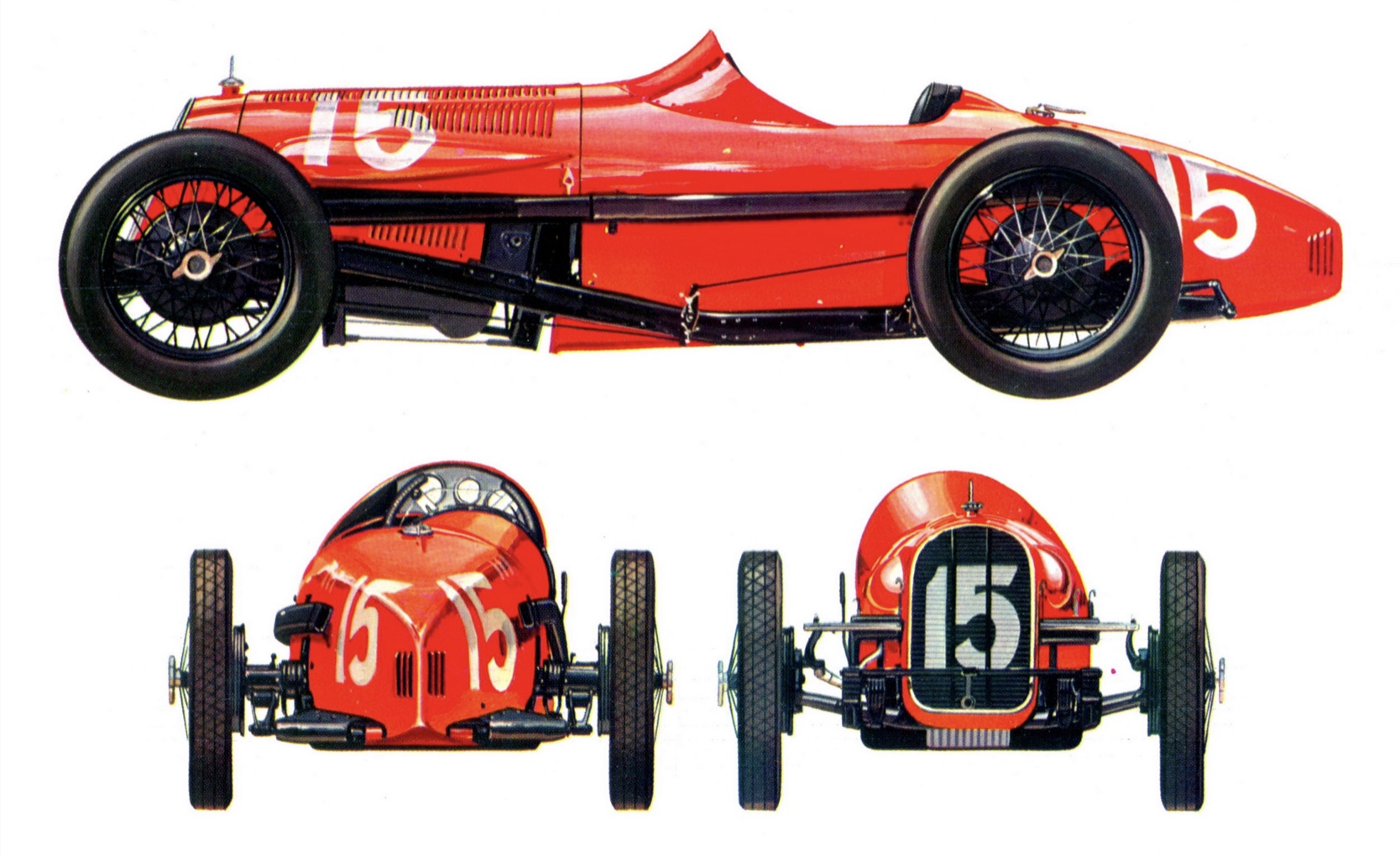
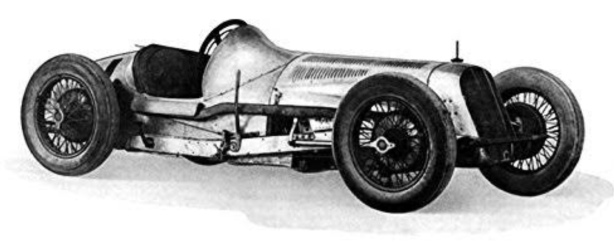
(unattributed)
Zerbi’s Tipo Fiat 406 engine was one of extraordinary extravagance of expression and innovation.
An amazing piece of engineering, it was a twelve-cylinder unit comprised of two inline-sixes mounted side by side on a common crankcase with the cranks geared together. The banks of exhaust valves were placed on the outer flanks of the cylinder heads whilst the inlets were adjacent and operable by a single camshaft with twelve lobes.
The cranks were built up using ‘Hirth principles of crankpins mating with webs by radial serrationsand locked together by throughbolts’ LJKS wrote. Their were eight main-bearings of plain journal type- a departure for Fiat who had hitherto used rollers, a tradition they established. Connecting rods were one-piece with plain bearings, three camshafts and a single Roots blower. All up weight of the engine was 170kg to which was attached a four speed gearbox.
The quest was piston area- the bore was 50mm and stroke 63mm, at the time this was a lower bore/stroke ratio than only the Bugatti T39. Fiat achieved fitting larger valves into smaller cylinders.

(unattributed)

(Setright)
Whilst Setright asserts the ‘Type 406 engine could run happily run at 8000 rev/min’ at which it gave about 175bhp (187bhp @8500), it seems that state of happiness was not for prolonged periods as testing by Bordino at Monza in the summer of 1927 showed.
Mind you, the car was fast- reportedly four seconds a lap quicker at Monza than the 1925 lap record held by Peter Kreis. Boddy wrote that development work on aero engines impeded progress on the new GP car too so the thing clearly had huge potential.
The low, slender monoposto weighed 700kg dry and was, on paper, the most powerful and fastest car built to the 1.5 litre formula.
In the meantime the 1927 season was well underway with the Delage 15 S-8 proving very competitive with an early win in the GP de l’Ouverture at Monthlery in mid-March and then a championship win at the same circuit in early July.
At the end of the month he won again, this time at Lasarte near San Sebastian, the site of the Spanish GP which that year was one of five Grand Epreuves.
As the European GP at Monza drew closer, Hans Etzrodt wrote that Fiat suddenly withdrew their entry from the race, despite assuring the organisers they would compete if the event were postponed from 4 to 18 September.
The reason given for their withdrawal was supposed tyre problems but it was assumed the new Fiats were not yet ready- that is they were not sufficiently developed to complete a GP of 500km in distance.
As a consequence of Fiat’s concern about the experimental engine’s life- in fact it is said Agnelli himself intervened, whilst the ‘big boys’ contested the 500km European Grand Prix (also the Italian GP) at Monza on 4 September Bordino raced in the 50km Milan GP support event winning his rain soaked heat at 92.88mph and a similarly sodden final at 94.57mph from Giuseppe Campari’s aged 2 litre Alfa Romeo P2.
The victory was not without pain as an engine failed in practice requiring an ‘all nighter’ to have the sole 806 chassis race-ready.
The feature race, poorly supported with only six starters, was won again by Robert Benoist’s Delage 15 1.5 S8, from Giuseppe Morandi, OM 8C GP 1.5 S8 and the Cooper-Miller Special 1.5 S8 shared by Earl Cooper and Peter Kreis.
The Manufacturers World Championship was effectively decided after this race in favour of Delage as neither Miller or Duesenberg could best their points advantage by winning the remaining championship event, the British GP on 1 October.

Bordino, Fiat 806, Monza (unattributed)

Alfonso Zampieri Amilcar 1.1 S6, Bordino Fiat 806 1.5 12, Emilio Materassi Bugatti T35C 2.0 S8, Nino Cirio Bugatti T37A 1.5 S4, Abele Clerici Salmson 1.1, Peter Kreis Cooper Miller Spl 1.5 S8, Giuseppe Campari, Alfa Romeo P2 2.0 S8, Aymo Maggi Bugatti T35C 2.0 S8

Felice Nazzaro, who was the starter, talking to Bordino on the Milan GP heat 2 grid- Fiat 806. #14 is Robert Serboli, Ciribili 12/16 and #12 Nino Cirio, Bugatti T37A. Bordino won from Cirio and Serboli (unattributed)
A full team of 806’s was entered for the RAC GP at Brooklands with Nazzaro, Bordino and Salamano nominated as drivers but the cars did not appear, Schneider Trophy priorities were cited as the reason for the no-show.
And with that Fiat withdrew completely from GP racing…finally to reappear as owners of Ferrari in 1969.
There are a variety of theories as to the reasons for Fiats withdrawal from racing whilst noting Boddy’s observations about a focus on aircraft racing earlier.
Dick Ploeg in his review of Sebastien de Coulanges ‘Fiat en Grand Prix’ in velocetoday.com attributes Giovanni Agnelli’s sudden withdrawal to the loss of too many of his star drivers- Evasio Lampiano, Biagio Nazzaro, Enrico Giaccone, Ugo Sivocci and Onesimo Marchisio had all been killed.
The death of Pietro Bordino testing a Bugatti seems to have been the last straw, and with that he ordered the destruction of all FIAT racing cars by the end of the 1927 season.
Cyril Posthumus wrote in ‘The Roaring Twenties’ ‘Benoist in the 1500 Delage had entered for the Milan Grand Prix but elected not to run. That way Delage avoided possible defeat. Only one car was actually built, and legend, unconfirmed, has it that Fiat chief Agnelli, returning from a long American tour, was furious at the work being put into the racing car at a time when the economic recession was already being felt, and ordered it to be broken up, together with all spares and patterns…’ Note that Fiat constructed a factory in Poughkeepsie, New York in 1910 so Agnelli’s knowledge of economic conditions in a key market would have been very much current.
Doug Nye on ‘The Nostalgia Forum’ in 2003 wrote that ‘…I was schooled by Cyril Posthumus (my editor at “Motor Racing” magazine in the mid-sixties) to understand that Agnelli pulled out of racing primarily because he was outraged at the manner in which Bertarione had gone off to Sunbeam and produced a Fiat in green paint which won in France at Fiat’s expense, and Becchia went to Talbot and performed similarly and above all when Jano and Bazzi went to Alfa Romeo and really kicked the coal bucket all over Fiat’s lounge carpet…each of these engineers having been- in Agnelli’s view- expensively Fiat trained.’
Doug Nye, again, adds to the theses in his ‘Motor Racing Mavericks’. He wrote, ‘In Fiats experimental shop the prototype 806 lay under wraps until the new year, and on 14 January Guido Fornaca- Fiat’s very pro-motor racing managing director died. As a new regime took over under Agnelli so racing fell from favour, and then came the inexplicable order to destroy the last Grand Prix car, to destroy its engines and all existing parts, and even its detail drawings. This orgy of destruction spelled the end to Fiat’s noble Grand Prix career, and their ultimate racing car just became so much molten metal, bubbling in a cauldron in a Fiat foundry.’
A variety of historians, a variety of views and perhaps all are partially true- the sum total a decision by Agnelli to withdraw from racing.

Bordino, Fiat 806, Monza lovely impressionist piece (P Codognato)
At this point Setright’s observations about the state of Grand Prix racing are interesting.
‘This final abstention of Fiat from racing at the end of 1927 marked the beginning of a period in which, from the engineering point of view, Grand Prix racing went into a period of decline, so that in the next six years only one development of any technical value- the transmission of the 1932 type B Alfa Romeo- caused any stir amid the general stagnation.’
‘The period was also one in which the administration of the sport fell into disorder, the governing body finding itself powerless to control the active participants. Indeed it was this very dissention that contributed to the obstruction of technical progress.’
‘Whether paradoxically or as a direct consequence of this, the sport enjoyed a rise in popularity ‘qua’ sport, and the frequency in which races were held increased markedly in 1928 and 1929. In the first of these years it had been intended that a new set of regulations would supplant the 1 1/2 litre formula which, in its brief two years of life, had demonstrated fairly conclusively that any attempt to limit increases in performance by imposing more severe limitations on engine size would only lead to intensive development of more complex and highly tuned engines so that racing would not become necessarily any slower, nor essentially any safer, but inexorably more costly.’
‘It was therefore proposed that engine capacity should be unrestricted, but that it should be related to a sliding scale of minimum weights ranging from 550-750kg for the empty vehicle, and that races should be over a distance of at least 600km.’
In reality what actually happened was races run to Formula Libre from 1928 to 1934 when the 750kg formula started and a period of both innovation and intensive development of existing paradigms set in motion by the departed Fiat…

(Antique Automobile)
Tipo 406 Engine Detail…
There is not a heap of information about this engine or the car which carried it given the short life of all of the constituent parts, so I have reproduced the material about the motor published in the January 1951 issue of Motorsport. The writer, Bill Boddy, credits ‘Motor Italia’ as the source and ‘Antique Automobile’ for the translation.
‘The bore and stroke were 50mm by 63mm and the cylinder structure as before with a single crankcase for each row of three blocks of two. The inclined overhead valves were of 30mm overall, 27mm face diameter and had a lift of 7mm. Each had three guided springs. Valve operation was by three overhead camshafts, the centre one actuating the inlet valves of each bank, the pouter ones the exhaust valves, via fingers in each instance as in the other FIAT engines.The camshafts, running in plain bearings, were driven from the rear of the crankshaft, via Oldham couplings, by one very large and five small spur gears on anti-friction bearings.’
‘A Roots supercharger was mounted centrally at the front of the engine and driven from the right-hand crankshaft by a pinion meshing with one of the actual rotor gears via a multi-plate clutch. Three pinions united the two crankshafts, which were of built up type by Hirth, running each in four plain bearings. Normal plain big ends were used. The main and big end journals were 40mm in diameter, the former 30mm long, except for the front bearing, which was 32mm long, the latter 41mm. the connecting rods were 5.118 inches long, or over 2 times stroke.’
‘The pistons were again supported by their rings, of which there were two per groove, in three grooves per piston; 18mm sparking plugs extended well into the hemispherical conbustion chambers. The oil pump, at the back of the engine, ran at less than engine speed.’
‘Vaglienti had a hand in the design of this remarkable engine. It weighed 381 lb. and the model 806 car in which it was installed turned the scales at just over 13 cwt. Maximum speed quoted as 149mph. The engine developed 173bhp at 7500rpm and 187bhp at 8500rpm, figures that are truly remarkable. A test in July 1027 shows, shows 160bhp, at 8000rpm at a manifold pressure of 12.52psi, the temperature of the compressed mix 162 degrees fahrenheit (72 degrees C)’
‘This was an experimental engine and it is confidently stated that the aforementioned 187bhp, equal to a power/weight ratio of over 1hp per Kg, was subsequently attained. Compared with the present day 1 1/2 litre engine with two-stage supercharging which gives 300-400bhp on special fuels, the output of this 1927 twelve cylinder FIAT unit still ranks as exceedingly noteworthy’.

Same Monza shot as above but all tidied up with a Fascist or three in attendance (unattributed)
Etcetera…

(CSF)
Fiat’s first factory at Corso Dante, Turin in 1902.

(CSF)
The first Fiat to participate in low level competition was the 1901 8HP road machine but it was quickly replaced by the 12HP four-cylinder car in the same year, both cars are shown in the photo above of the 1901 Giro d’Italia Automobile.
The 8HP in front has a tube radiator whereas the four cylinder behind is fitted with a honeycomb unit and was Fiat’s first purpose built racer- Count Carlo Biscaretti di Ruffia was the driver.

(CSF)
The Gordon Bennett Cup started in 1900, it was run until 1905 when the Automobile Club of France, international race organisers themselves, formed their own championship, the first for Grand Prix cars.
In the fifth Cup race in 1904 Vincenzo Lancia (above) won the Brescia-Cremona and Mantua-Brescia sections, the latter at an amazing 71.8mph in his big 75HP Corsa and for this won the Italian Cup, Graham Gauld wrote. The outright winner was Leon Thery in a Richard-Brasier.

(CSF)
Alessandro Cagno (tenth) in front of his 75HP Gordon Bennett Fiat- five were built. Wonderful atmosphere of the times, Event held on the Homburg Circuit, four laps of a 79 1/2 mile course through the Taunus Forest near Bad Homburg, Germany in June 1904.

(CSF)
Felice Nazzaro’s great win (above) in the 1907 Targa Florio, teammate Vincenzo Lancia followed his home, they both raced Fiat 28-40 Corsa- 7.3 litre eight cylinder machines ‘with two four cylinder engines in two pairs’ wrote Graham Gauld.

(CSF)
Emile Salmson after winning the 1907 Winter Cup- 322 miles from Gothenburg to Stockholm, over 23 1/2 hours over snow and ice coveered roads, Fiat 60HP.

(CSF)
Cagno at the wheel of a 1914 Fiat S57/14B Corsa.

(CSF)
Post World War One Italy re-entered motorsport with the 50.9km Parma-Poggio di Berceto hillclimb in October 1919.
The factory entered a 1914 S57A/14B Corsa they had raced at Lyons that year but fitted with an enlarged 4.8 litre engine. When they withdrew Antonio Ascari (above) acquired the car and won the race, beginning the family legend. Another legend got underway in thatsame event- Enzo Ferrari contested his first race in the same event finishing fifth in class aboard a CMN 2.3 litre car.
Three weeks later Ascari won again in the Coppa della Consuma, a 16km hillclimb east of Florence, he then contested Targa, he led after 31km but crashed out at Caltavuturo after 58km, overturning and landing in a ditch. Enzo Ferrari was there too- in an Isotta Fraschini, he also retired.

Carlo Salamano in a Fiat 803 1.5 litre S-4 unsupercahrged, 1922 Gran Premio d’Italia Vetturette (CSF)
You probably did a number count earlier on and wondered what had become of the Tipo 803- indeed there was such a car.
Quite a significant one given its credits of first supercharged formula car win and first to win a GP.
During 1922 design on the new Voiturrette got underway, the chassis was similar to the other race Fiats of the period with front springs passing through the axle. Initially the Tipo 403 engine was a 65 x 112mm bore/stroke normally aspirated twin-cam, two valve four which produced 60bhp.
So engined, a team of cars entered the late 1922 Italian Small Car Race at Monza, Bordino won from Giaccone, Lampiano and Salamano. These 1.5 litre road racers were the fastest cars of their type in the world at the time and almost as quick as their 2 litre brothers.
A further development of the car was to incorporate a Wittig supercharger into the specification, in this 80bhp form the 1.5 litre, supercharged Tipo 403 four cylinder engined machine raced in two events in 1923.

(unattributed)
The photo above shows the grid of the ‘Third Gran Premio delle Vette’ or 1923 GP Voiturette held at Brescia on 29 June 1923.
The 522km race, 30 laps of a 17.4km course, was won by the Alessandro Cagno’s Fiat 803 from Renzo Lenti, Bugatti T22 and Alete Marconcini in a Chiribiri 12/16. Please let me know if you can identify the cars/drivers.
Two 803’s also contested the October 1923 JCC 200 mile race at Brooklands, both Salamano and Malcolm Campbell failed to finish.

Fiat 804 cockpit during the 1922 French GP weekend. Plenty of instruments to keep the mechanic occupied and not a lot of space. A clock is an unusual fitment in a modern GP car. Fuel tap at far left, four speed ‘box. Wonderful.

(unattributed)
Enrico Giaccone Fiat 805 during the 1923 French GP, Tours. DNF engine after finishing 32 of 35 laps.

(CSF)
Carlo Salamano refuels the body whilst his 805 is attended to during the 1923 Italian GP at Monza, a race he won.

(CSF)
Pietro Bordino with the 805 monoposto in the United States in 1925, circuit unknown but possibly Indianapolis.

Fiat 806 cutaway drawing (Blueprints)
Art and Photo Credits…
Brian Hatton, Giulio Betti, britmodeller.com, Blueprints, ‘CSF’- Centro Storico Fiat, George A Oliver, Plinio Codognato
Bibliography…
‘The Grand Prix’ LJK Setright, Motorsport January 1951, Dick Ploeg article in VeloceToday.com published 14 December 2011, Hans Etzrodt race reports of the GP D’Europa and GP Milano on kolumbus.fi, ‘Motor Racing Mavericks’ Doug Nye, ‘The Roaring Twenties’ Cyril Posthumus, ‘Aviation History: Schneider Trophy Race’ Historynet.com, ‘Auto Racing Comes of Age’ Robert Dick, ‘Racing Car Evolution Part 3 1922-1925’ Laurence Pomeroy Motorsport November 1942, ‘The Racing Car Development and Design’ Cecil Clutton, Cyril Posthumus and Denis Jenkinson
Tailpiece…
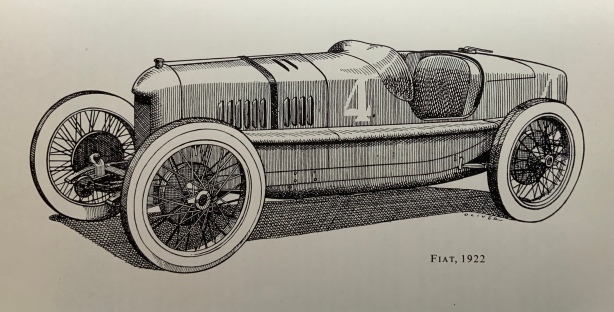
(GA Oliver)
The 2 litre Fiat 804 straight-eight raced by Felice Nazzaro to victory in the 1922 French Grand Prix at Strasbourg. ‘With its low, compact build and six cylinder, roller-bearing engine, it set new design fashions’ wrote Clutton, Posthumus and Jenkinson.
The beautiful drawing of an equally attractive racing car is by George A Oliver.
Finito…

